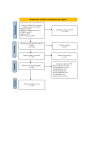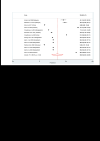Short birth interval in the Asia-Pacific region: A systematic review and meta-analysis
- PMID: 38700432
- PMCID: PMC11067827
- DOI: 10.7189/jogh.14.04072
Short birth interval in the Asia-Pacific region: A systematic review and meta-analysis
Abstract
Background: Short birth interval is associated with an increased risk of adverse health outcomes for mothers and children. Despite this, there is a lack of comprehensive evidence on short birth interval in the Asia-Pacific region. Thus, this study aimed to synthesise evidence related to the definition, classification, prevalence, and predictors of short birth interval in the Asia-Pacific region.
Methods: Five databases (MEDLINE, Scopus, Cumulative Index to Nursing and Allied Health Literature, Maternity and Infant Care, and Web of Science) were searched for studies published between September 2000 and May 2023 (the last search was conducted for all databases in May 2023). We included original studies published in English that reported on short birth interval in the Asia-Pacific region. Studies that combined birth interval with birth order, used multi-country data and were published as conference abstracts and commentaries were excluded. Three independent reviewers screened the articles for relevancy, and two reviewers performed the data extraction and quality assessment. The risk of bias was assessed using the Joanna Briggs Institute critical appraisal tool. The findings were both qualitatively and quantitatively synthesised and presented.
Results: A total of 140 studies met the inclusion criteria for this review. About 58% (n = 82) of the studies defined short birth interval, while 42% (n = 58) did not. Out of 82 studies, nearly half (n = 39) measured a birth-to-birth interval, 37 studies measured a birth-to-pregnancy, four measured a pregnancy-to-pregnancy, and two studies measured a pregnancy loss-to-conception. Approximately 39% (n = 55) and 6% (n = 8) of studies classified short birth intervals as <24 months and <33 months, respectively. Most of the included studies were cross-sectional, and about two-thirds had either medium or high risk of bias. The pooled prevalence of short birth interval was 33.8% (95% confidence interval (CI) = 23.0-44.6, I2 = 99.9%, P < 0.01) among the studies that used the World Health Organization definition.
Conclusions: This review's findings highlighted significant variations in the definition, measurement, classification, and reported prevalence of short birth interval across the included studies. Future research is needed to harmonise the definition and classification of short birth interval to ensure consistency and comparability across studies and facilitate the development of targeted interventions and policies.
Registration: PROSPERO CRD42023426975.
Copyright © 2024 by the Journal of Global Health. All rights reserved.
Conflict of interest statement
Disclosure of interest: The authors completed the ICMJE Disclosure of Interest Form (available upon request from the corresponding author) and disclose no relevant interests.
Figures
Similar articles
-
Short birth interval prevalence, determinants and effects on maternal and child health outcomes in Asia-Pacific region: a systematic review and meta-analysis protocol.BMJ Open. 2023 Dec 28;13(12):e076908. doi: 10.1136/bmjopen-2023-076908. BMJ Open. 2023. PMID: 38154890 Free PMC article.
-
Effects of short inter-pregnancy/birth interval on adverse perinatal outcomes in Asia-Pacific region: A systematic review and meta-analysis.PLoS One. 2024 Jul 31;19(7):e0307942. doi: 10.1371/journal.pone.0307942. eCollection 2024. PLoS One. 2024. PMID: 39083535 Free PMC article.
-
Short birth/pregnancy interval and its association with adverse maternal outcomes in Asia Pacific region: A systematic review and meta-analysis.Midwifery. 2025 May;144:104342. doi: 10.1016/j.midw.2025.104342. Epub 2025 Feb 17. Midwifery. 2025. PMID: 39986113
-
Beyond the black stump: rapid reviews of health research issues affecting regional, rural and remote Australia.Med J Aust. 2020 Dec;213 Suppl 11:S3-S32.e1. doi: 10.5694/mja2.50881. Med J Aust. 2020. PMID: 33314144
-
Factors associated with short birth interval in low- and middle-income countries: a systematic review.BMC Pregnancy Childbirth. 2020 Mar 12;20(1):156. doi: 10.1186/s12884-020-2852-z. BMC Pregnancy Childbirth. 2020. PMID: 32164598 Free PMC article.
References
-
- World Health Organization. Report of a WHO technical consultation on birth spacing (2007): Geneva, Switzerland 13-15 June 2005. Available at https://www.who.int/publications/i/item/WHO-RHR-07.1. Accessed: 30 May 2023.
Publication types
MeSH terms
LinkOut - more resources
Full Text Sources
Miscellaneous


